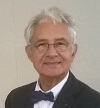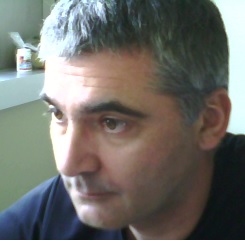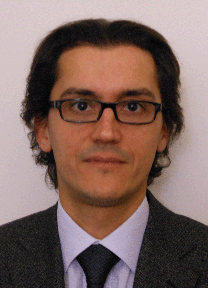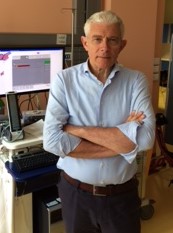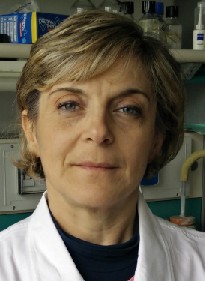Studying at the University of Verona
Here you can find information on the organisational aspects of the Programme, lecture timetables, learning activities and useful contact details for your time at the University, from enrolment to graduation.
Academic calendar
The academic calendar shows the deadlines and scheduled events that are relevant to students, teaching and technical-administrative staff of the University. Public holidays and University closures are also indicated. The academic year normally begins on 1 October each year and ends on 30 September of the following year.
Course calendar
The Academic Calendar sets out the degree programme lecture and exam timetables, as well as the relevant university closure dates..
| Period | From | To |
|---|---|---|
| INF. TN 1° anno 1° semestre | Oct 2, 2014 | Dec 19, 2014 |
| INF. TN 2° anno 1° semestre | Oct 2, 2014 | Dec 19, 2014 |
| INF. TN 3° anno 1° semestre | Oct 13, 2014 | Dec 19, 2014 |
| INF. TN 3° anno 2° semestre | Feb 2, 2015 | Mar 24, 2015 |
| INF. TN 1° anno 2° semestre | Feb 2, 2015 | Apr 1, 2015 |
| INF. TN 2° anno 2° semestre | Apr 20, 2015 | Jun 23, 2015 |
| Session | From | To |
|---|---|---|
| INF. TN sessione invernale 1°-2°-3° anno | Jan 7, 2015 | Jan 30, 2015 |
| INF. TN sessione estiva 3° anno | Apr 1, 2015 | Apr 21, 2015 |
| INF. TN sessione estiva 1° anno | Apr 13, 2015 | Apr 23, 2015 |
| INF. TN sessione estiva 2° anno | Jul 6, 2015 | Jul 31, 2015 |
| INF. TN sessione estiva 3° anno - | Jul 16, 2015 | Jul 31, 2015 |
| INF. TN sessione estiva 1° anno - | Jul 16, 2015 | Jul 31, 2015 |
| INF. TN sessione autunnale 2°-3° anno | Sep 7, 2015 | Sep 25, 2015 |
| INF. TN sessione autunnale 1° anno | Sep 7, 2015 | Sep 30, 2015 |
| Session | From | To |
|---|---|---|
| Sessione autunnale | Nov 1, 2015 | Dec 31, 2015 |
| Sessione primaverile | Mar 1, 2016 | Apr 30, 2016 |
| Period | From | To |
|---|---|---|
| Ognissanti | Nov 1, 2014 | Nov 1, 2014 |
| Festa dell'immacolata | Dec 8, 2014 | Dec 8, 2014 |
| VACANZE DI NATALE | Dec 22, 2014 | Jan 6, 2015 |
| Vacanze di Pasqua | Apr 2, 2015 | Apr 7, 2015 |
| Festa della Liberazione | Apr 25, 2015 | Apr 25, 2015 |
| Festa dei Lavoratori | May 1, 2015 | May 1, 2015 |
| Festa della Repubblica | Jun 2, 2015 | Jun 2, 2015 |
| Festa del S. Patrono - TN | Jun 26, 2015 | Jun 26, 2015 |
| Description | Period | From | To |
|---|---|---|---|
| INF. TN 2^ anno (1^ esp.) | INF. TN 2^ anno (1^ esp.) | Feb 2, 2015 | Mar 6, 2015 |
| INF. TN 2^ anno (2^ esp.) | INF. TN 2^ anno (2^ esp.) | Mar 16, 2015 | Apr 17, 2015 |
| INF. TN 3^ anno (1^ esp.) | INF. TN 3^ anno (1^ esp.) | Apr 22, 2015 | May 26, 2015 |
| INF. TN 1^ anno (1^ esp.) | INF. TN 1^ anno (1^ esp.) | Apr 24, 2015 | May 29, 2015 |
| INF. TN 3^ anno (2^ esp.) | INF. TN 3^ anno (2^ esp.) | Jun 3, 2015 | Jul 15, 2015 |
| INF. TN 1^ anno (2^ esp.) | INF. TN 1^ anno (2^ esp.) | Jun 5, 2015 | Jul 15, 2015 |
| INF. TN 3^ anno (3^ esp.) | INF. TN 3^ anno (3^ esp.) | Sep 1, 2015 | Oct 16, 2015 |
| INF. TN 2^ anno (3^ esp.) | INF. TN 2^ anno (3^ esp.) | Sep 1, 2015 | Oct 9, 2015 |
Exam calendar
Exam dates and rounds are managed by the relevant Medicine Teaching and Student Services Unit.
To view all the exam sessions available, please use the Exam dashboard on ESSE3.
If you forgot your login details or have problems logging in, please contact the relevant IT HelpDesk, or check the login details recovery web page.
Should you have any doubts or questions, please check the Enrollment FAQs
Academic staff
 anita.bevilacqua@apss.tn.it
anita.bevilacqua@apss.tn.it
 borghesi.a@mail.apss.tn.it
borghesi.a@mail.apss.tn.it
 monica.campregher@apss.tn.it
monica.campregher@apss.tn.it
 cembrani@apss.tn.it
cembrani@apss.tn.it
 dellai@tn.apss.tn.it
dellai@tn.apss.tn.it
 dipalma@tn.aziendasanitaria.trentino.it
dipalma@tn.aziendasanitaria.trentino.it
 tullio.ferrari@univr.it
tullio.ferrari@univr.it
 franco.fraccaroli@unitn.it
franco.fraccaroli@unitn.it
 galligioni@tn.apss.tn.it
galligioni@tn.apss.tn.it
 giuliani@tn.apss.tn.it
giuliani@tn.apss.tn.it
 marcoioppi@katamail.com
marcoioppi@katamail.com
 lama@tn.apss.tn.it
lama@tn.apss.tn.it
 noro@tn.aziendasanitaria.trentino.it
noro@tn.aziendasanitaria.trentino.it
 loredana.pancheri@univr.it
loredana.pancheri@univr.it
 pfaender@rov.apss.tn.it
pfaender@rov.apss.tn.it
Raffaeta' Roberta
Study Plan
The Study Plan includes all modules, teaching and learning activities that each student will need to undertake during their time at the University.
Please select your Study Plan based on your enrollment year.
1° Year
| Modules | Credits | TAF | SSD |
|---|
Professional Laboratories (1st year)
2° Year activated in the A.Y. 2015/2016
| Modules | Credits | TAF | SSD |
|---|
Professional Laboratories (2nd year)
3° Year activated in the A.Y. 2016/2017
| Modules | Credits | TAF | SSD |
|---|
Professional Laboratories (3rd year)
| Modules | Credits | TAF | SSD |
|---|
Professional Laboratories (1st year)
| Modules | Credits | TAF | SSD |
|---|
Professional Laboratories (2nd year)
| Modules | Credits | TAF | SSD |
|---|
Professional Laboratories (3rd year)
Legend | Type of training activity (TTA)
TAF (Type of Educational Activity) All courses and activities are classified into different types of educational activities, indicated by a letter.
Pathophysiology applied at Nursing - SEMEIOTICA E FISIOPATOLOGIA (2014/2015)
Teaching code
4S000090
Teacher
Credits
2
Language
Italian
Scientific Disciplinary Sector (SSD)
MED/09 - INTERNAL MEDICINE
Period
INF. TN 1° anno 2° semestre dal Feb 2, 2015 al Apr 1, 2015.
To show the organization of the course that includes this module, follow this link: Course organization
Learning outcomes
To know the pathophysiologic basis of the main pathological processes. To learn how cells work, and subsequent extension of the information to different cell types and apparatuses in order to explain the main human pathologies with a continuous reference to the cell model.
Program
The homeostasis and its perturbations: alterations in the intake of nutrients, cell needs, regulation of water and electrolytes, regulation of acid-base, alterations in oxygen supply, cardiovascular abnormalities, liver diseases, excretory function and control of homeostasis by the kidney.
Program in expanded form:
1.Fundamental cell needs: O2 intake, intake of nutrients and elimination of metabolites, maintenance of fluids, electrolytes and acid-base equilibrium. Anemia: in particular deficiency anemia, hemoglobinopathies and hyporegenerative anemias.
2.Electrolyte equilibrium in the body: maintainance of volume and distribution of fluids and their possible alterations: overhydration and dehydration syndromes, balance between intra- and –extra-cellular fluids (isotonic, hypertonic and hypotonic), intra and extracellular buffer systems, maintaining the balance electrolyte and acid-base. Signs and symptoms of fluid and electrolyte deregulation.
3. Endocrine system: main hormones with metabolic activity and regulation of the circulatory system, hyper- and hypo- function of the main endocrine glands and stress responses, diabetes mellitus, hyper- and hypoglycemia.
4. Respiratory system: impaired ventilation, alveolar-capillary diffusion of gases, alveolar ventilation-perfusion, respiratory failure. Signs and symptoms of respiratory diseases.
5. Cardiovascular system: control of vascular tone and blood pressure, high blood pressure (hints about pathophysiological hypotheses with references to endocrine pathophysiology), ischemic heart disease, heart failure, left and right sided heart failure. Signs and symptoms of heart/circulatory diseases.
6. Urinary System: function of the urinary tract: the kidney as a filter. Very brief dissertation about kidney disease and about acute and chronic renal failure.
7. Digestive system: malnutrition, portal hypertension (brief), ascites. Signs and symptoms of diseases of the digestive system.
8. Diseases involving the central nervous system as a result of metabolic disorders (hypoxia, hypercapnia, hypoglycemia, hypotonia, hypertonia and hyperammonemia).
Examination Methods
Multiple choice test, eventually oral exam
Career prospects
Module/Programme news
News for students
There you will find information, resources and services useful during your time at the University (Student’s exam record, your study plan on ESSE3, Distance Learning courses, university email account, office forms, administrative procedures, etc.). You can log into MyUnivr with your GIA login details: only in this way will you be able to receive notification of all the notices from your teachers and your secretariat via email and soon also via the Univr app.
Gestione carriere
Orario lezioni
Documents
| Title | Info File |
|---|---|
|
|
pdf, it, 437 KB, 07/03/24 |
|
|
pdf, it, 457 KB, 16/04/24 |
|
|
pdf, it, 450 KB, 05/04/24 |
|
|
pdf, it, 628 KB, 08/01/24 |
|
|
pdf, it, 1453 KB, 07/02/24 |
Guida ai programmi degli insegnamenti
Guida ai programmi degli insegnamenti
Documents
| Title | Info File |
|---|---|
|
|
pdf, it, 1594 KB, 12/12/22 |
|
|
pdf, it, 1310 KB, 02/09/21 |
Graduation
Documents
| Title | Info File |
|---|---|
|
|
pdf, it, 242 KB, 19/01/24 |
|
|
pdf, it, 80 KB, 06/04/24 |
|
|
pdf, it, 43 KB, 06/04/24 |
|
|
pdf, it, 44 KB, 09/04/24 |
|
|
pdf, it, 148 KB, 06/04/24 |
|
|
pdf, it, 108 KB, 06/04/24 |
|
|
pdf, it, 115 KB, 06/04/24 |
|
|
pdf, it, 1487 KB, 18/02/22 |
|
|
pdf, it, 437 KB, 22/03/24 |
|
|
pdf, it, 957 KB, 22/03/24 |
|
|
pdf, it, 424 KB, 19/01/24 |
Linee guida per riconoscimento cfu
Lo studente che intende chiedere il riconoscimento di moduli o insegnamenti pregressi dovrà presentare domanda, entro il 30 novembre dell’anno accademico in corso, seguendo le indicazioni indicate al link seguente: https://www.univr.it/it/i-nostri-servizi/segreterie-studenti/gestione-carriere-studenti-medicina-e-chirurgia/riconoscimento-crediti-acquisiti-da-una-carriera-pregressa-medicina
Documents
| Title | Info File |
|---|---|
|
|
pdf, it, 295 KB, 09/11/21 |
Student login and resources
Attività didattiche regime part-time
Modalità di richiesta
La domanda di iscrizione part-time può essere presentata all'inizio di ogni anno accademico e comunque entro il 30 novembre di ogni anno. Entro lo stesso termine, se necessario, lo studente potrà richiedere di tornare al regime full-time. Al link seguente la pagina del servizio https://www.univr.it/it/i-nostri-servizi/segreterie-studenti/flessibilita-nella-frequenza-dei-corsi/possibilita-di-iscrizione-part-time-e-ripristino-full-time
Una volta inviata la domanda, lo studente concorda in via preventiva con il Coordinatore della didattica professionale (CDP), il piano di studi che intende perseguire nel periodo di part-time compilando il modulo in allegato
Documents
| Title | Info File |
|---|---|
|
|
octet-stream, it, 1309 KB, 21/10/22 |
Appelli d'esame
Appelli d'esame
Documents
| Title | Info File |
|---|---|
|
|
pdf, it, 429 KB, 17/04/24 |
|
|
pdf, it, 2762 KB, 15/12/22 |
Tirocinio Professionalizzante
Tirocinio Professionalizzante
Attività Seminariali e a scelta dello studente
Attività Seminariali e a scelta dello studente

 +039 0458027288
+039 0458027288

